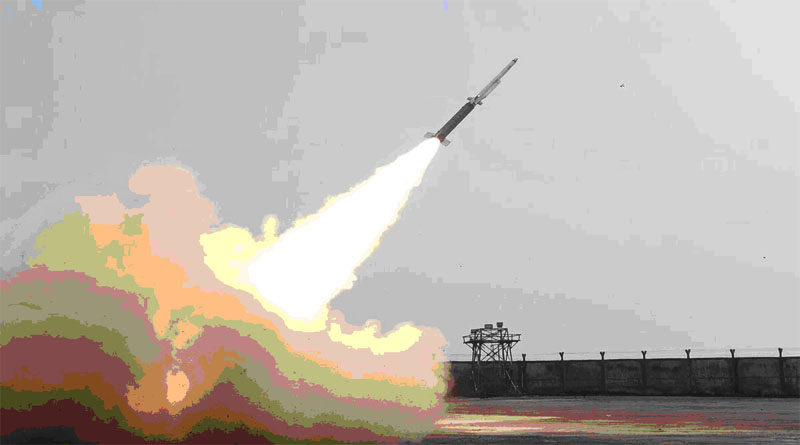DRDO Successfully Tests SFDR Technology For Missiles
March 5, 2021
DRDO tests the Solid Fuel Ducted Ramjet Technology in Chandipur, Odisha, on Friday. The air-to-air missiles, which use SFDR technology, can achieve longer ranges as they do not require oxidisers, among other reasons, a senior DRDO scientist said.
The Defence Research and Development Organisation (DRDO) on Friday successfully conducted another test of the Solid Fuel Ducted Ramjet (SFDR) technology, which is crucial for the indigenous development of long range air-to-air missiles.
“DRDO successfully conducted flight test of Solid Fuel Ducted Ramjet (SFDR) Technology today at around 1030 hrs from Integrated Test Range (ITR) Chandipur. All the subsystems including the ground booster motor performed as per expectation,” the official Twitter handle of DRDO posted.
A senior DRDO scientist said that as part of the test, the missile was guided to a certain altitude to create the simulation of the release from an aircraft. After achieving the desired altitude, the nozzle-less booster was fired..
The missile, using the SFDR technology, accelerated to reach multiples of the speed of sound, also known as Mach. To monitor the test parameters, various telemetry and radar stations were deployed.
Air-to-air missiles which use SFDR technology can achieve longer ranges as they do not require oxidisers, among other reasons, the scientist said.
Pune-based DRDO facility, High Energy Material Research Laboratory (HEMRL), developed the nozzle-less booster while two facilities in Hyderabad – the Defence Research and Development Laboratory (DRDL) and Research Centre Imarat (RCI) — were also part of the project.
A successful test of SFDR technology was earlier conducted in February 2019.
Courtesy: IE

